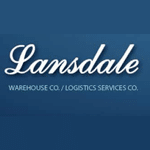Supply Chain KPIs: A Guide to Mastering SCM Efficiency
Learn how to measure and optimize your supply chain performance with this detailed guide to Supply Chain Key Performance Indicators (KPIs).
In today’s complex and fast-paced business environment, mastering supply chain efficiency is crucial for organizations to stay competitive and meet customer demands. One effective tool for achieving this is the use of Supply Chain Key Performance Indicators (KPIs). These KPIs provide valuable insights into the performance of various aspects of the supply chain and enable businesses to identify areas for improvement and make informed decisions.
Understanding the Importance of Supply Chain KPIs
Supply Chain Key Performance Indicators (KPIs) are crucial tools that organizations use to evaluate and optimize various aspects of their supply chain operations. These metrics encompass a wide range of activities within the supply chain, such as procurement, production, logistics, and customer service. By diligently tracking and analyzing these KPIs, companies can obtain a detailed and insightful overview of their supply chain’s efficiency and effectiveness.
One key benefit of utilizing Supply Chain KPIs is the ability to proactively identify areas for improvement and optimization. These metrics serve as a compass for organizations, guiding them towards strategic decision-making and operational enhancements. Moreover, by establishing clear KPIs that are closely aligned with the organization’s overarching goals, companies can foster a culture of continuous improvement and innovation within their supply chain management processes.
Defining Supply Chain KPIs
Before delving into the role of KPIs in supply chain management (SCM) efficiency, it is important to establish a clear definition of what KPIs actually are. Supply Chain KPIs are quantifiable measurements that reflect the achievement of critical objectives and goals within the supply chain. These metrics are typically aligned with an organization’s overall business strategy.
Furthermore, it is essential to note that Supply Chain KPIs can vary significantly depending on the nature of the industry, the specific goals of the organization, and the complexity of the supply chain network. From on-time delivery rates to inventory turnover ratios, each KPI offers a unique perspective on different facets of supply chain performance, allowing companies to gain a comprehensive understanding of their operational strengths and weaknesses.
The Role of KPIs in SCM Efficiency
KPIs play a pivotal role in driving SCM efficiency by providing organizations with actionable insights and benchmarks to measure and improve performance. By monitoring KPIs, businesses can identify bottlenecks, resource constraints, and areas of inefficiency within their supply chain processes.
Moreover, SCM KPIs empower organizations to establish performance targets, track progress towards key objectives, and foster a culture of accountability and transparency across all levels of the supply chain. By leveraging these metrics effectively, companies can enhance operational agility, optimize cost structures, and ultimately gain a competitive edge in today’s dynamic business landscape.

Key Components of Effective Supply Chain KPIs
While there is a wide range of KPIs that organizations can choose from, it’s essential to identify the ones that are most relevant to their business goals and operations. Here are two key components to consider when designing effective supply chain KPIs:
Identifying Relevant KPIs for Your Business
Every organization has unique supply chain requirements and objectives. Therefore, it is crucial to identify the KPIs that align with your specific business needs. For example, if reducing lead times is a priority, you may want to track metrics such as order cycle time or on-time delivery.
Moreover, when selecting relevant KPIs, it’s important to consider the industry in which your organization operates. For instance, a manufacturing company may focus on KPIs related to production efficiency and inventory turnover, while a retail business may prioritize KPIs that measure customer satisfaction and product availability.
Balancing Quantitative and Qualitative KPIs
While numerical KPIs provide objective data, qualitative KPIs offer insights into customer satisfaction, supplier relationships, and other intangible factors. Striking a balance between these two types of KPIs is vital for a holistic view of supply chain performance.
Additionally, qualitative KPIs can help identify areas for improvement that may not be captured by quantitative metrics alone. For example, measuring employee morale or vendor communication effectiveness can provide valuable context to quantitative data on cost savings or delivery times.
Steps to Implementing Supply Chain KPIs
Implementing supply chain KPIs requires careful planning and execution. Here are three crucial steps to follow:
Setting Clear Objectives
Before selecting KPIs, organizations must establish clear objectives for their supply chain. These objectives should align with the overall business strategy and reflect the specific goals and priorities that the organization aims to achieve.
Setting clear objectives is essential for guiding the selection of relevant KPIs. For example, if a company’s objective is to improve on-time delivery performance, the KPIs selected should focus on metrics such as order fulfillment cycle time, transportation lead time, and warehouse processing time. By aligning KPIs with specific objectives, organizations can effectively measure performance and track progress towards their goals.
Establishing Measurement Criteria
Once objectives are defined, appropriate measurement criteria must be established for each KPI. This includes deciding on the data sources, frequency of measurement, and the specific formula or calculation method to be used.
Choosing the right measurement criteria is crucial for ensuring the accuracy and reliability of KPI data. Organizations need to consider factors such as data availability, accuracy, and relevance when establishing measurement criteria. For example, if a KPI requires real-time data for accurate measurement, organizations may need to invest in advanced data collection and analytics tools to support this requirement.
Regular Monitoring and Evaluation
Monitoring and evaluating KPIs should be an ongoing process. Organizations should establish a regular cadence for reviewing KPI performance, analyzing trends, and identifying improvement opportunities. Regular evaluation enables timely adjustments and ensures continuous improvement.
How do you monitor your KPIs? That’s where an effective dashboard is essential. Your warehouse management software should include a KPI dashboard that lets you visually monitor what’s going on in your business.
Regular monitoring and evaluation of KPIs allow organizations to identify potential issues or bottlenecks in the supply chain and take corrective actions promptly. By tracking KPI performance over time, organizations can also gain valuable insights into trends and patterns that may impact supply chain efficiency and effectiveness. This proactive approach to monitoring and evaluation helps organizations stay agile and responsive to changing market conditions and customer demands.

Common Challenges in Supply Chain KPI Implementation
While implementing supply chain KPIs can yield significant benefits, it is not without its challenges. Two common challenges organizations face during implementation are:
Overcoming Data Collection Issues
Gathering accurate and reliable data for KPI measurement can be challenging, especially when multiple systems and stakeholders are involved. Organizations need robust data management processes and systems to ensure data accuracy and consistency.
One way organizations can overcome data collection challenges is by implementing automated data collection processes. Automation can help streamline the data gathering process, reduce errors, and improve overall data quality. Additionally, establishing clear data governance policies and protocols can ensure that all stakeholders understand their roles and responsibilities in data collection, contributing to more accurate KPI measurement.
Addressing Integration Challenges
Integrating disparate systems and data sources to obtain a comprehensive view of the supply chain can be a daunting task. Effective integration is crucial for accurate KPI measurement and analysis. Organizations should invest in technology solutions that facilitate seamless data integration.
Furthermore, organizations can consider adopting cloud-based integration platforms that offer scalability and flexibility in data integration. These platforms can help streamline the integration process, reduce implementation time, and provide real-time visibility into supply chain performance. By leveraging advanced integration tools and technologies, organizations can enhance their ability to track KPIs effectively and make informed decisions based on accurate and integrated data.
Related: Key Performance Indicators (KPIs) for Ecommerce Fulfillment
Optimizing Supply Chain Performance with KPIs
When utilized effectively, supply chain Key Performance Indicators can drive continuous improvement and optimize overall supply chain performance. By measuring specific metrics and analyzing data, organizations can gain valuable insights into their supply chain processes. Here are two ways to leverage KPIs for enhanced efficiency:
Leveraging KPIs for Continuous Improvement
KPIs provide valuable insights into the performance of various supply chain processes. By analyzing KPI data and identifying areas of improvement, organizations can implement targeted initiatives to enhance efficiency, reduce costs, and improve customer satisfaction. For example, tracking KPIs related to inventory turnover can help organizations identify slow-moving items and adjust their inventory management strategies accordingly.
Aligning KPIs with Business Goals
For maximum effectiveness, supply chain KPIs must align with the organization’s overall business goals and strategy. By aligning KPIs with business objectives, organizations can ensure that their supply chain efforts are contributing to the achievement of broader organizational goals. For instance, if a company’s goal is to improve sustainability, they can track KPIs related to carbon emissions and transportation efficiency to measure their progress towards that goal.
Mastering supply chain efficiency is an ongoing journey. By leveraging supply chain KPIs, organizations can gain valuable insights into their supply chain performance, identify improvement opportunities, and drive continuous optimization. Implementing effective supply chain KPIs is an essential step towards mastering Supply Chain Management efficiency and staying ahead in today’s competitive business landscape. Organizations that prioritize the strategic use of KPIs in their supply chain operations are better positioned to adapt to changing market conditions and drive sustainable growth.

Optimize Your Supply Chain KPIs with Cadre Technologies
Elevate your supply chain performance with Cadre Technologies’ suite of solutions. Our cloud-based Warehouse Management System (WMS) and LogiView supply chain visibility software are designed to enhance the efficiency and transparency of your supply chain operations, directly impacting your key performance indicators.
Key Benefits:
- Cloud-Based Flexibility: Quickly adapt to market changes with our scalable WMS, reducing IT overhead and enhancing data security.
- Real-Time Visibility: LogiView offers unparalleled insights into your supply chain, enabling proactive decision-making and KPI optimization.
- Leverage Cadre Technologies to meet the evolving demands of your supply chain, ensuring you stay competitive in today’s fast-paced business environment.
Conclusion
As we wrap up our journey through the world of Supply Chain KPIs, it’s clear that these indicators are not just numbers on a dashboard. They’re the compass that guides businesses toward efficiency, growth, and customer satisfaction. Understanding and optimizing these KPIs is essential in today’s fast-moving world, helping you stay ahead of the curve and meet the ever-changing demands of your customers.
Mastering your supply chain isn’t a one-time task—it’s an ongoing journey that requires curiosity, flexibility, and the right tools for the job. That’s where Cadre Technologies comes in. Our solutions, designed with your needs in mind, offer the clarity and support you need to navigate the complexities of supply chain management with confidence.
Whether you’re just starting to explore the potential of your supply chain or looking to elevate your existing operations, we’re here to help you make every step count. Let’s embark on this journey together and unlock the full potential of your supply chain.
Embrace the future of supply chain management today. Discover how Cadre Technologies can transform your supply chain operations and help you achieve your strategic goals. Together, let’s redefine what’s possible in supply chain efficiency. Contact us to learn more.










